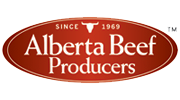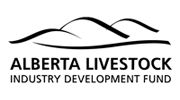Evaluating Industry Cattle Transport Practices
| Project Code: | 0022-002 |
| Completed: | April 2009 |
Project Title:
Benchmarking study of current transport practices in the Alberta beef industry
Researchers:
Dr. Karen Schwartzkopf Genswein karen.genswein@agr.gc.ca
Karen Schwartzkopf Genswein, PhD (Agriculture and Agri-Food Canada Lethbridge)
- Journal of Animal Science – “Benchmarking study of industry practices during commercial long haul transport of cattle in Alberta, Canada” doi:10.2527/jas.2011-4770
- Journal of Animal Science – “Factors affecting body weight loss during commercial long haul transport of cattle in North America” doi:10.2527/jas.2011-4786
- Journal of Animal Science – “Relationships between transport conditions and welfare outcomes during commercial long haul transport of cattle in North America” doi:10.2527/jas.2011-4796
Most commercial cattle are hauled at least three times in their lives (home ranch to auction mart, auction mart to feedlot, feedlot to packing plant); many are shipped more often than this (e.g. cows shipped to summer pasture, grass and backgrounding cattle). Livestock transportation is regulated by the Canadian Food Inspection Agency under the federal Health of Animals Act. Although the CFIA is interested in revamping the 30 year old transport regulations, there is very little research indicating that changing current industry practices is necessary, nor what the new standards should be. Relevant industry benchmark practices are needed to measure against before the effects of transportation on cattle welfare can be meaningfully studied, or before new regulations are introduced.
These researchers surveyed loads of cattle hauled by producers and commercial truckers into, out of, or travelling within Alberta. They collected information on driver experience, trailer type, loading density, distance travelled, time in transit, frequency of feed, water and rest breaks, temperature conditions in transit, transportation delays (frequency, length and reason), animal description (type, weight, sex, age, condition), etc. to identify (a) current industry practices, and (b) potential risks that are of particular concern.
Objectives:To establish current beef cattle trucking practices in Alberta.
What They Did:These researchers designed surveys to collect relevant information during both long (≥ 400 km) and short (< 400 km) haul transport. Surveys were mailed to several truck companies, farms and feedlots located throughout Alberta. Drivers completed one survey following each journey. Over 9,000 loads and close to half a million cattle were surveyed.
What They Learned:Driver experience: Equal proportions of long-haul drivers had less than 2 years (31%), 3-10 years (32%) or more than 10 years of experience hauling cattle (35%). More short-haul drivers had longer experience (68% had hauled livestock for more than 10 years).
Cattle class: Across both surveys, the majority of animals were fat cattle (63%); 27% were feeders over 600lbs, 7% were weaned calves, and 3% were market cows.
Distance and time on truck for long-haul trips averaged 16 hours in length. Although one long-haul trip took 45 hours, over 95% of long-haul cattle spent less than 30 hours in transit.
Transport delays due to mandatory paperwork and inspections at the Canada-USA border affected 77% of all long haul journeys. This delay averaged 1.3 hours, and lasted as long as 15 hours. On average, border delays were longer for feeders (nearly 4 hours) than fat cattle (1 hour). Delays due to drivers’ rest stops and waiting to unload cattle after arrival to the destination were also important. Interestingly, the unloading delays for Canadian cattle at U.S. packing plants tripled from 38 minutes (before Mandatory Country of Origin Labeling) to an hour and three quarters (after Mandatory Country of Origin Labeling was implemented) in the fall of 2008.
Temperature ranged from -42 to 45°C with an average maximum of 18°C. In spite of some long distances travelled (e.g. Bakersfield, California), fewer than 5% of journeys experienced a temperature fluctuation greater than 26oC.
Loading density was lowest in the nose and doghouse, but densities in the deck and belly generally exceeded Canadian recommendations. Calves and feeders were loaded at the highest density compared to recommendations; fat and cull cattle were loaded near or below recommended loading densities.
Shrink was higher in long-haul feeders (7% of body weight) than in fat cattle and market cows (both at 5%) or calves (2%) after accounting for transport time and temperature. Shrink increased sharply at temperatures over 30°C and increased with time on truck (but leveled off after 30 h).
Factors affecting animal health and welfare: 99.95% of long-haul and 99.98% of short-haul cattle reached their destination injury-free. The risk of injury (lame, downer, or dead) was higher for long-haul than short-haul journeys, and was highest in market cows, intermediate in calves, and lowest in feeder and fat cattle. Injuries were generally more prevalent for less experienced drivers, and increased at high temperatures (in fat cattle), long transit times, high levels of shrink, and loading density.
What It Means:Over 90% of Canadians are two or three generations removed from the farm. These people only see cattle on liners. This “first impression” keeps cattle transportation in the public eye, and makes it a common target for animal activist groups. This study should help to inform discussions about how Canada’s beef industry raises, manages, handles and transports cattle. It will also help to identify real problems so that industry can develop cost-effective ways to correct any issues that are identified.








